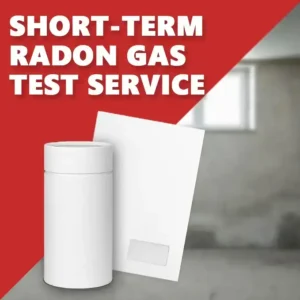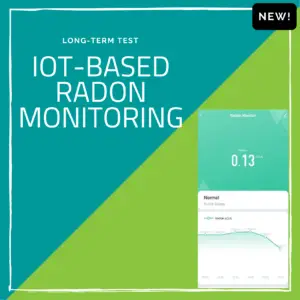Why Testing for Radon Matters in Manitoba
In Manitoba, Radon – a naturally occurring, radioactive gas that can accumulate in homes – poses a significant health risk. Advocates are urging residents to test their homes, especially as radon exposure is linked to lung cancer in non-smokers. According to a recent program by CTV News, about 19% of homes in the region exceed safe radon levels, particularly during winter months when ventilation is reduced.
The title is : ‘It is very scary’: Advocates urge Manitobans to test homes for radon. And it says: “Health advocates are warning Manitobans about an odorless, colorless danger that could be lurking in your home.November is Radon Action Month. To mark the occasion, the Manitoba Lung Association is reminding the public about the dangers of the naturally occurring radioactive gas and how you can protect yourself and your home from its effects.”
For details, visit CTV News. Katherine Dow / CTV News Anchor/Editorial Producer / Published Nov. 6, 2024 10:52 a.m. CST
What is radon
Radon is a radioactive gas that occurs naturally when the uranium in soil and rock breaks down. It is invisible, odourless and tasteless.
Radon exposure is the #1 CAUSE OF LUNG CANCER in non-smokers. Exposure to high levels of radon in indoor air results in an increased risk of developing lung cancer. The risk of cancer depends on the level of radon and how long a person is exposed to those levels.
RADON LEVELS IN CANADA
All homes in Canada have radon gas in them. Concentrations differ greatly across the country, but are usually higher in areas where there is a higher amount of uranium in underlying rock and soil.
Manitoba has had higher radon values in buildings than national averages. Health Canada has estimated that more than 19% of Manitobans are living in homes above the radon guideline of 200Bq/m3.
How can radon get into my home
Radon can enter a home any place it finds an opening where the house is in contact with the ground: cracks in foundation walls and in floor slabs, construction joints, gaps around service pipes, support posts, window casements, floor drains, sumps or cavities inside walls.
TESTING YOUR HOME IS
THE ONLY WAY TO DETECT RADON
No matter the age, type of construction or where your home is located, the only way to be sure of the radon level in your home is to test.
HOW DO I TEST MY HOME FOR RADON
Option1 # Purchase a do-it-yourself radon test device.
* Make sure you have enough knowledge and strictly follow instructions to run testing. Some test devices are not accurate, and some are not easy to use.
Option2 # Hire a radon measurement professional
IOT SOLUTION FOR CONTINUOUS RADON MONITORING
Visit IoT-Based Radon Monitoring for more details.
This is an IoT technology based solution with a digital radon monitoring sensor for smart home use. Real-time continuous testing and monitoring, convenient and accurate. You can check the values anytime, anywhere through a WiFi connection.
Alert notifications can be sent to you automatically or triggered by sound/LED indicators on the device.
Thresholds can be set as per Health Canada guidelines or you can set strict limits to notify yourself which can be set through the backend management system or the frontend through the app settings.
This may be a good choice if you want to continuously monitor the radon levels of your home for a long time and manage all the testing points in the house including basement, living room, bedroom and monitor on one platform.
IoT Based monitoring
The IoT-based radon gas testing equipment includes sensor components, as well as a data transmission module for accessing data to the cloud. This allows you to use algorithms to obtain data processing and customize your front-end interface and back-end management system.
HOW TO INTERPRET RADON RESULTS
Bq/m3 and pCi/L are different units of measurement for the radioactivity within a volume of space.
Bq/m3 is used globally, and pCi/L is almost exclusively used in the United States. One unit is not necessarily better than the other. They are just different units measuring the same thing.
1 pCi/L = 37 Bq/m3
Take actions if a home’s radon concentration exceeds the Canadian guideline level of 200 Bq/m3.
* For you information, per EPA(U.S. Environmental Protection Agency)
Greater than or Equal to 4.0 pCi/L (148 Bq/m3)
Above 4.0 pCi/L, you are putting yourself at unusually high risk for lung damage and cancer. This levels is roughly the same lung cancer exposure risk as smoking half a pack of cigarettes a day. If you are testing radon in conjunction with the sale of the building, 4.0 is typically used as the threshold radon level.
Between 2.7 and 4.0 pCi/L ( 100 Bq/m3 – 148 Bq/m3)
When reading your radon test results, it is worth noting that even though EPA indicates 4.0 pCi/L, the World Health Organization (WHO) recommends mitigation at or over 2.7 pCi/L. If you are testing for you own safety, as opposed to selling the building, you may consider mitigation when you are in this range.
One factor to consider at this level is the amount of time spent in the lowest floor of your home. Another is the actual height of your nose above the floor while in that area. Anyone who sits or lays down for extended periods while in those areas will receive a higher radon dose than those standing. Children, especially crawling children, are more affected because of the proximity of their noses to the floor.

